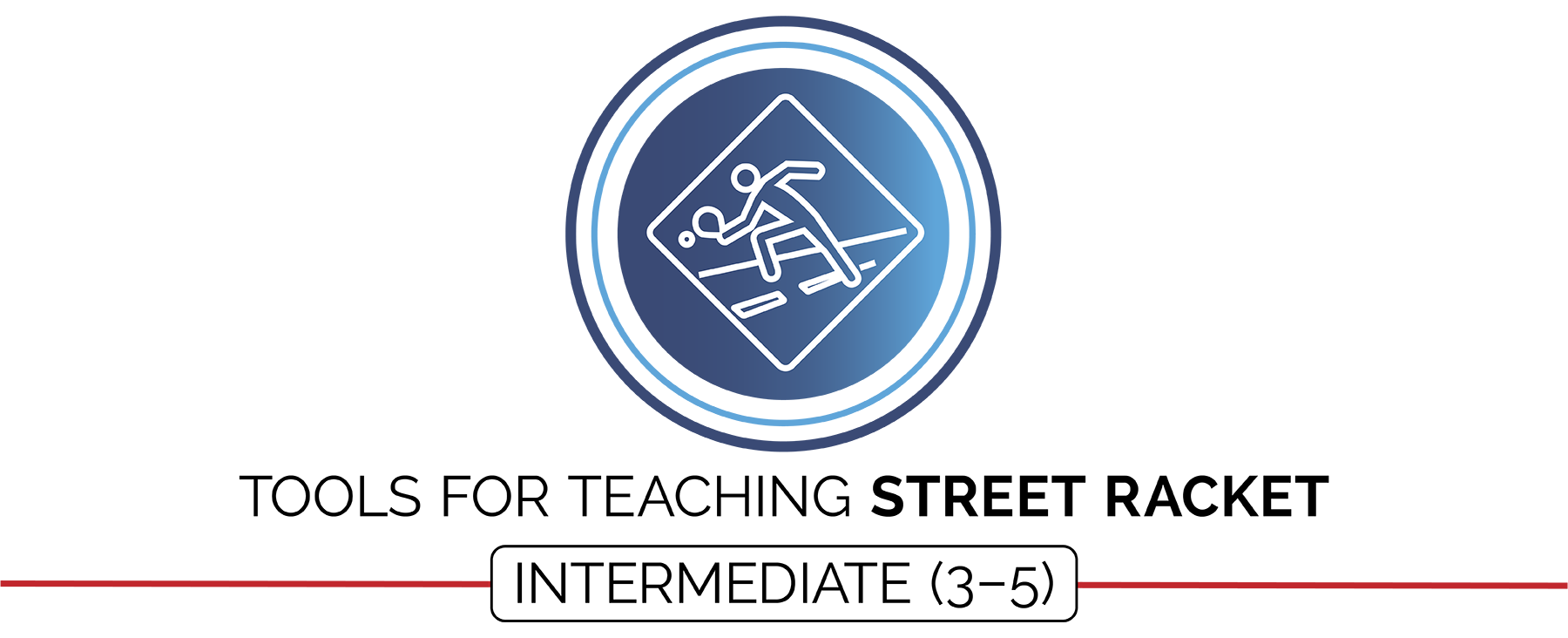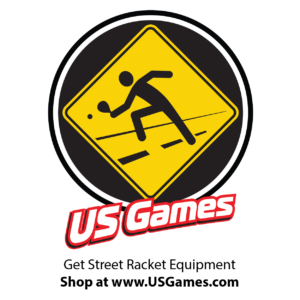Created By: Street Racket USA, Nichole Wilder
Special Contribution: Aaron Hart, Andrea Hart
This module was developed in partnership with the team from Street Racket USA and OPEN. The game of Street Racket was created in Switzerland to promote healthy lifestyles and well-being, but also to bring people together through racket games and movement. Street Racket games are played with little infrastructure, due to the courts being created with chalk or tape, which makes the game easily accessible as a physical activity opportunity outside of physical education class as well.
The activities within this module develop and reinforce responsible behaviors, while introducing racket skills that may be new to some students. All participants are given the opportunity to explore racket skills in a fun and engaging environment where all students can feel successful. This can allow all students to also participate in social engagement and building connections with their classmates that can extend beyond physical education.
Purchase Street Racket from USGames.com
For additional information on Street Racket, you can visit their website at https://www.streetracket.com/.
Module Documents
Complete Module Packet:
Module Overview:
Required Materials:
All Module Activities:
Sample Lesson Plan:
Academic Language Cards
Court Diagrams:
Rules Chart:
Skill Cues Chart:
Universal Design Adaptations:
Activity Plans
Hello Racket:
Helpful Hoops:
Street Racket Basics:
Switch It Up:
Fitness Frenzy:
Off the Walls:
Rotating Corners:
Follow Your Shot:
Assessment
Holistic Performance Rubric:
Academic Language Quiz:
Teacher Reflection
Teacher Self-Assessment & Reflection Guide:
Can’t see the file links? Register for FREE today to access all of the modules. SIGN UP HERE
PRIORITY OUTCOMES:
Accepting Feedback:
(3) Accepts and implements specific corrective teacher feedback.
(4) Listens respectfully to corrective feedback from others (adults and peers).
(5) Gives corrective feedback respectfully to peers.
Fitness Knowledge:
(3) Describes the concept of fitness and provides examples of physical activities to enhance fitness.
(4) Identifies the components of health-related and skill-related fitness.
(5) Identifies activities that require and/or improve the components of fitness.
Manipulative Skills:
(3) Demonstrates manipulative skills using mature patterns for accuracy and control.
(4) Combines locomotor and manipulative skills using mature patterns for accuracy and control in static and dynamic environments.
(5) Executes a variety of manipulative skills with control and accuracy in small-sided games.
Personal Responsibility & Safety:
(3) Works independently and safely in physical activity settings.
(4) Exhibits responsible behavior in independent group situations.
(5) Engages in physical activity with responsible interpersonal behavior (e.g., peer to peer, student to teacher).
Social Interaction:
(3) Describes the positive social interactions that come when engaged with others in physical activity.
(4) Describes and compares positive social interactions when engaged in partner, small-group, and large-group physical activities.
(5) Describes the social benefits gained from participating in physical activity.
Working With Others:
(3) Works cooperatively with others.
(4) Accepts “players” of all skill levels into the physical activity.
(5) Accepts, recognizes, and actively involves others with both higher and lower skill abilities into physical activities and group projects.


